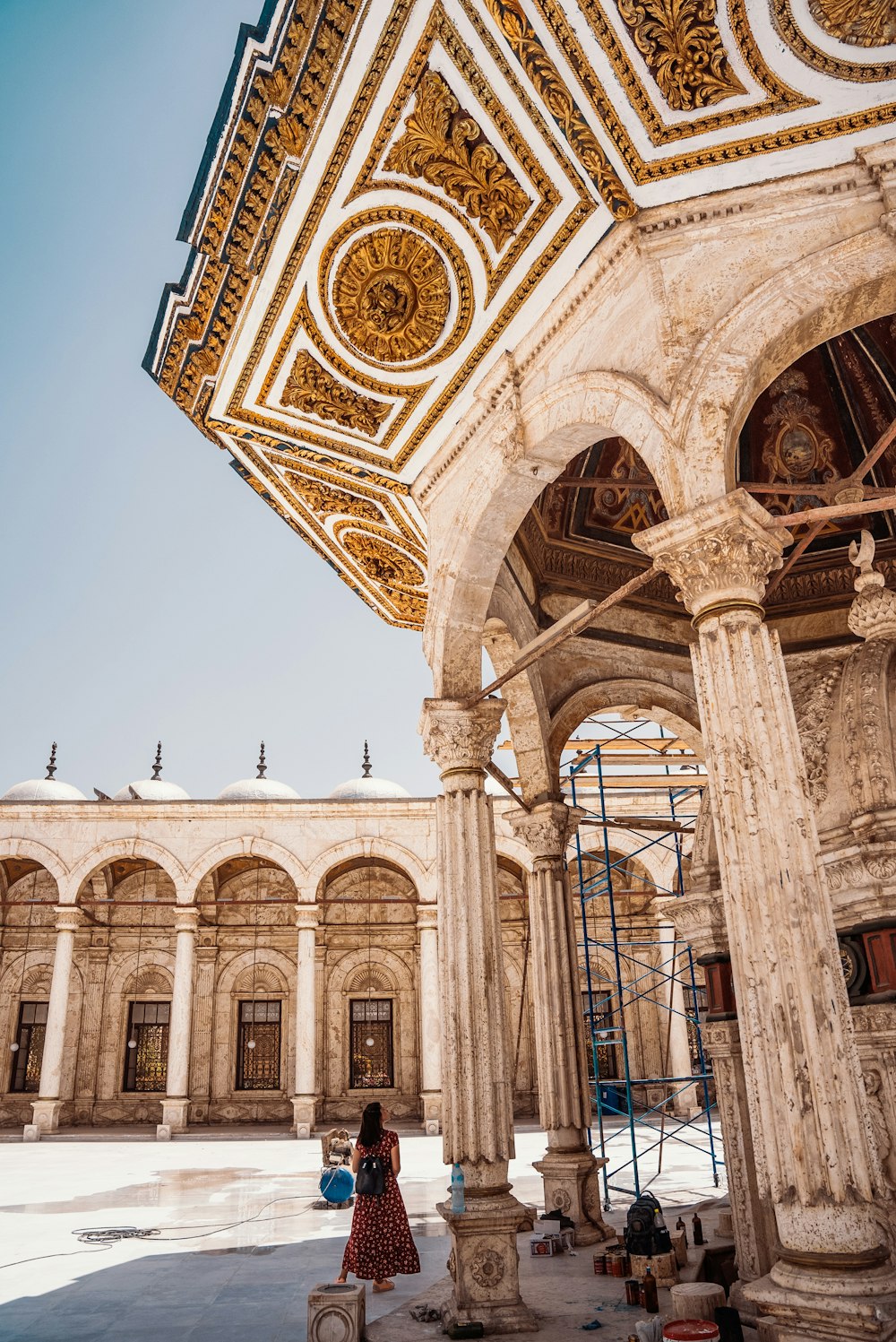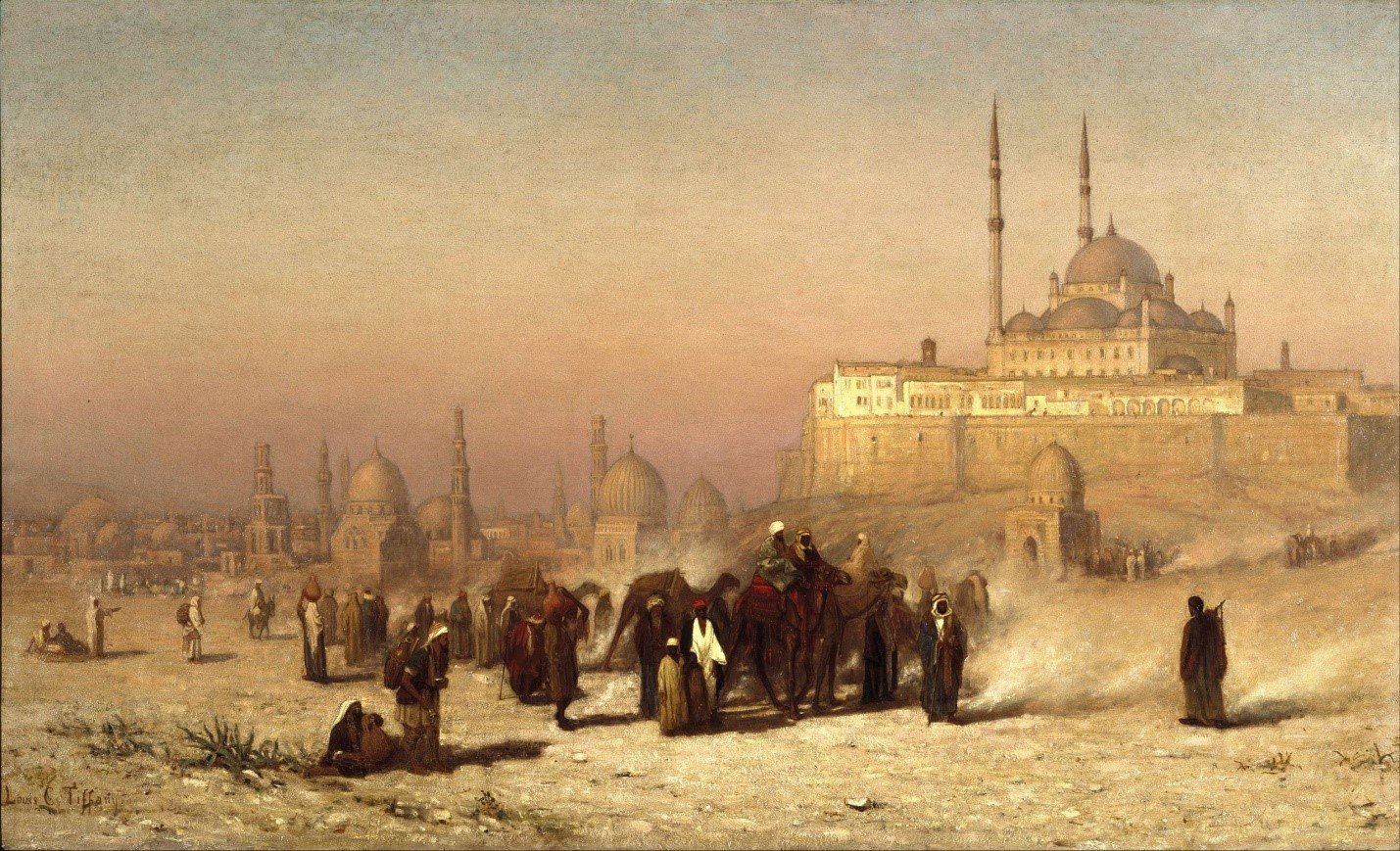
Saladin paces the corridors, bracing his unwavering, intense devotion on the back of an army as he lines blueprints for a citadel. Centuries later, Muhammed Ali dines in a great hall—flanked by men and a conduit of ill-will. He will pinch a grape between two fingers and hail the end of the Mamluks; they will not leave his citadel standing. A carved, double-headed vulture, sits on the Western wall as an unspeaking witness to a massacre.
Today, the athan (call to prayer) rumbles through Cairo’s highlands and the iftar cannon fires on sultry Ramadan evenings.
At the heart of it all is a single structure: the Cairo Citadel.
First dubbed Qal’at al-Jabal, or Citadel of the Mountain, it is the only urban citadel in Egypt and the final addition to a series of structures across Anatolia, Syria, and the Arabian Peninsula. It is considered the most monumental, as the first seat of the Ayyubid dynasty and the Mamluk sultanate. First conceptualized by Salah al-Din al-Ayyubi in 1176 AD, it was designed to be the “stronghold in a grand and ambitious defensive project” that would encircle Cairo and the then Fatimid capital, al-Fustat.

Although Saladin did not see it come to fruition, his nephew, Sultan Kamel ibn al-Adel, realized the project later in 1207 through 1208 AD. In doing so, he effectively cemented the citadel as the “official residence of the rulers of Egypt” up until the mid nineteenth century. During the decades following its construction, Mamluk sultans expanded the structure, endowing the citadel with an immense number of palaces and open spaces, solidifying it as a beating pulse in the center of Cairo.
Muhammed Ali took particular interest in the citadel, and worked to renovate and fortify its dilapidated nature during his reign in 1811 AD.
Within the structure are several mosques, palaces, and museums, including the famous Mosque of Muhammed Ali, otherwise known as the Alabaster Mosque due to its regal coating of alabaster along both its interior and exterior walls. Built around 1830 through 1848, it is also the tomb of Muhammed Ali himself.
El-Gawhara Palace (“the Jewel”) – named after Gawhara Hanem, the last of Muhammed Ali’s wives – is situated in the southern section of the citadel, established in 1814 as a residence for Gawhara Hanem herself.
In modern times, Egypt’s Military museum was also added to the premises in 1949, solidifying the timeline of Egyptian military prowess from the start of the Pharaonic era to present day. Similarly, the National Police museum was also opened on the northwest side of the citadel in 1986 to commemorate late Egyptian war heroes such as Adham al-Sharqawi and the officers of the Ismailia battle.
Countless other sites exist within the citadel, however, including the Archeological Garden Museum and the Royal Vehicle Museum.

From the time it was built to the present day, the Cairo Citadel has “acted as the backdrop to some of the most significant events in Egyptian history.” It was considered the most impressive and ambitious military fort of its time, and as recently as 1983, was used as a military garrison by British forces and later the Egyptian army.
It was open to the public following its designation as a UNESCO World Heritage site. Today, the Egyptian government has endeavored to include the citadel in many national and commercial events; while the use of historical venues is highly contested and, in other cases entirely polarizing, the citadel has featured more commonly in the public consciousness as a result.

Despite this, there has been little scholarly interest in the Cairo Citadel, aside from a study by academic Paul Casanova outlining the vibrant, and often violent history behind the fortress. According to scholar Nasser O. Rabbat, “no modern scholar has added much to our understanding of its architectural history.”
Regardless, it remains a formidable site visited by hundreds daily. Containing multiple mosques, museums, historical carriages, and plenty of untold histories, the Cairo Citadel remains a fixture on the Cairene horizon.







Comments (3)
[…] قلعة صلاح الدين: قلعة القاهرة الحضرية الوفد: رحلة الحزب السياسي الأيقوني في مصر […]
[…] قلعة صلاح الدين: قلعة القاهرة الحضرية […]